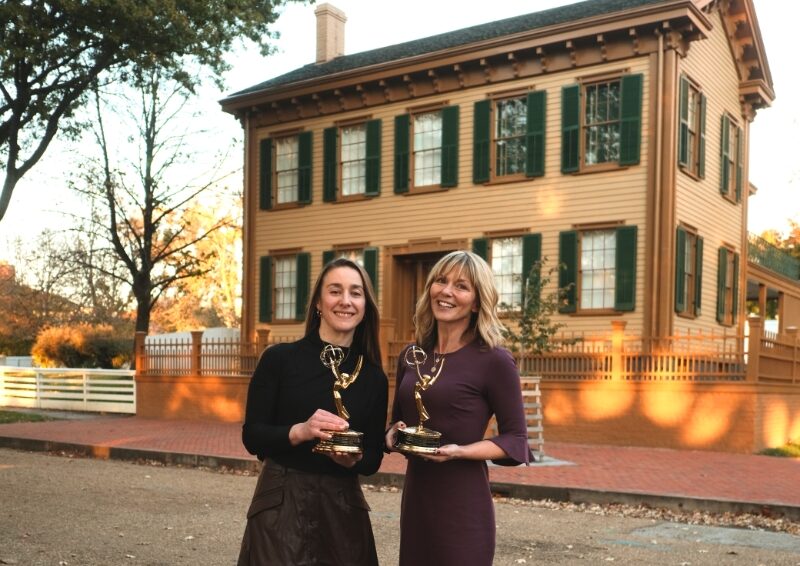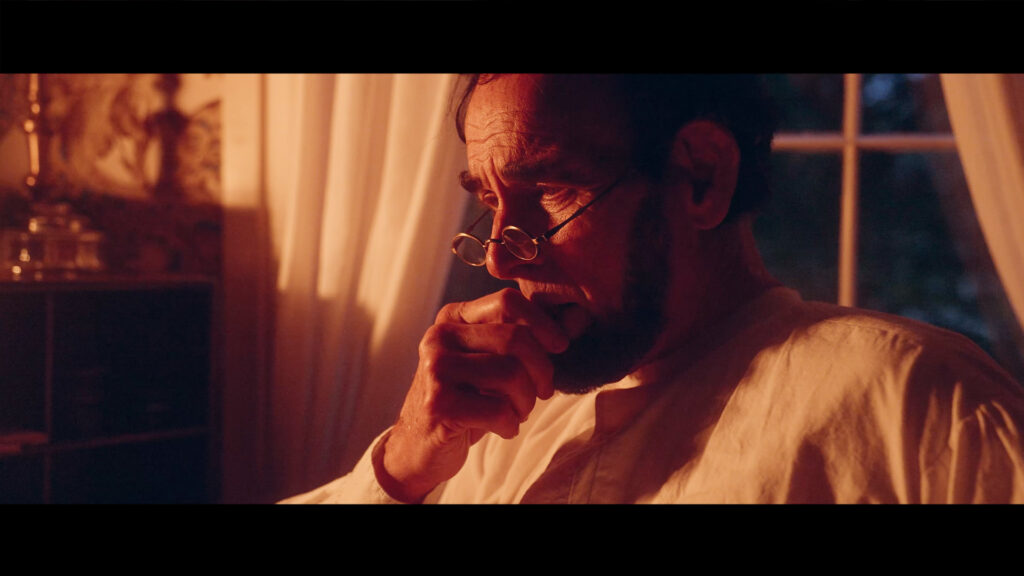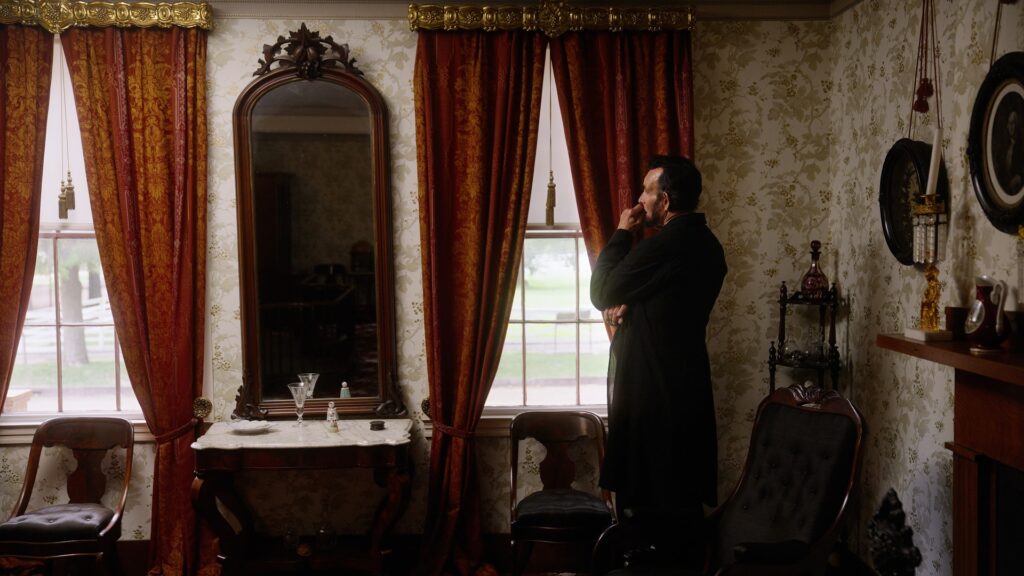How the Lincoln Presidential Foundation partnered with Storyteller Studios to reach new audiences with purposeful, award-winning films. Contributed by Josh Hester, Founder & Executive Producer, Storyteller Studios.
Cultural institutions, including museums and sites, know their audiences are seeking answers to ever-changing, complex questions. The public want experiences that are meaningful, accessible, and visually rich, but turning complex topics into stories that meet modern viewing habits is no small task.
This is the challenge the Lincoln Presidential Foundation brought to Storyteller Studios. They needed educational content that was historically rigorous yet emotionally compelling. The films had to convey accurate information in a way that captivated younger viewers and casual learners. Above all, they needed to move viewers to care. Not just to watch, but to engage.
We’ve now completed two multi-part documentary projects with the Foundation: Warning Signs: Lincoln’s Response to Rising Tensions in the 1850s and Fortifying Our Democracy: Lincoln’s Lyceum Address. Both are structured as episodic digital series, free to watch, easy to share online or to use in the classroom.
The first series, Warning Signs, earned a Mid-America Emmy Award in 2023. It’s also become a model for how episodic, short-form documentaries can be used to meet the needs of educators and institutions alike.
The Problem: Modern Audiences, Complex History
Lincoln Presidential Foundation’s vision was clear. They needed media that would be trusted by teachers, historians, and public audiences alike, but just as important, they needed the content to feel at home in a world where audiences scroll, stream, and tune out fast. And they had to find a production team that could meet those expectations.
As Erin Mast, President and CEO of the Foundation, put it: “With any new contractual relationship, there are potential concerns like culture fit, attention to accuracy and detail, and ability to synthesize information into a great, compelling story.”
She’s not alone. Many of our clients feel this tension. Museums, exhibit spaces, and cultural institutions are working to modernize their storytelling tools without losing the substance that defines their mission.
This kind of media isn’t just about content, it’s about trust. The wrong tone or approach can set the wrong expectations, or worse, misrepresent the material altogether.
The Approach: Making Educational Media That Works
We knew these projects had to be more than just informational. They needed to be memorable. Here’s how we tackled it:
- Let the experts speak.
We structured each episode around documentary-style interviews with leading historians and subject-matter experts. These weren’t scripted lectures. They were warm, engaging, and deeply human conversations. We let the experts teach in their own voice, while guiding the narrative with thoughtful editing and pacing.
This approach also helped us avoid a common trap in educational media: relying on scripted, omniscient voiceover or stiff on-camera hosts. These techniques are tempting. They offer a sense of control and are often the default when subject-matter experts view the production team as technical button-pushers instead of creative partners. But modern audiences have been trained to ignore this style. They’ve seen it for decades. It feels generic and forgettable. By treating historians as the storytellers, rather than narrating over them, we created space for authentic connection and trust. The result is something more engaging, more credible, and far more likely to stick.
- Think episodically.
Rather than create one long film, we broke each project into short, stand-alone episodes, each about 5–7 minutes long. These bite-sized chapters work well in classrooms, online, and in museum programming. And because they build sequentially, they keep viewers engaged without demanding a huge time commitment up front.
It might seem counterintuitive, but breaking a film into shorter episodes actually increases overall viewer retention. Research in cognitive psychology shows that attention is easier to maintain when information is chunked into smaller, self-contained units. This gives the brain natural stopping points, without triggering a full stop. In practice, it keeps audiences moving forward, one segment at a time. We’ve seen it firsthand: first graders begging to watch the next episode. That’s the power of pacing and structure designed for how people actually watch, not how we hope they might.
And there’s more to it than attention span. Withholding information strategically is an old storytelling trick. When done well, each episode builds momentum by ending with a small reveal, an unresolved question, or a teaser of what’s next. An episode that ends abruptly doesn’t confuse viewers, it compels them. It invites curiosity, not closure. That curiosity is what keeps people engaged, whether they’re in a classroom, a museum, or on their couch.
- Use tone-setting scenes.
We filmed original scenes featuring actors and historically accurate settings to help audiences visualize each story. We don’t call these “re-enactments.” They’re more like visual mood pieces. They suggest what a moment might have looked, felt, or sounded like, without trying to depict it with theatrical literalness. The goal is to invite viewers into the emotional texture of the era.
This blend of formats, conversational interviews, cinematic visuals, and episodic pacing, became our signature structure for educational storytelling.
The Impact: New Projects, New Audiences
Since launching these films, Lincoln Presidential Foundation has gained new partnerships, new supporters, and new momentum. The series has been screened at film festivals, conferences and symposia, in classrooms, and for teacher workshops, online and onsite public programs. The series was even broadcast by C-SPAN’s American History TV. The visual style, pacing, and clarity of message have made them easy to adopt and hard to ignore.
Erin Mast summed it up this way: “Our work with Storyteller has created new partnerships, new support, new projects, and new audiences across the country. What started out as a pilot project has grown into two completed docuseries, each of which has won four awards (and counting), and a third in production.”
A Model for Others
We’ve since applied this approach to other series-style projects, including a series about the life and legacy of Julius Rosenwald for an exhibit planned for Lincoln Home National Historic Site. And, a new educational series about Abraham Lincoln’s early career as an attorney on Illinois’ 8th Judicial Circuit for Looking for Lincoln.
Each project shares the same structure and intent: to take something historically significant and make it emotionally resonant, accessible, and durable. We collaborate closely with our clients. We treat their subject matter with reverence. And we focus on the experience of the audience, not just the accuracy of the facts.
Of course, not everything we produce is about Abraham Lincoln. It only seems that way. Yes, we’re headquartered in Springfield, Illinois, Lincoln’s hometown. And yes, many of us made stovepipe hats and beards out of construction paper in second grade. But this model of thoughtful, episodic, authentically moving storytelling isn’t limited to one figure or era. There are countless stories waiting to be told with this level of care. We’re eager to keep going, whether the subject wears a top hat or not.



